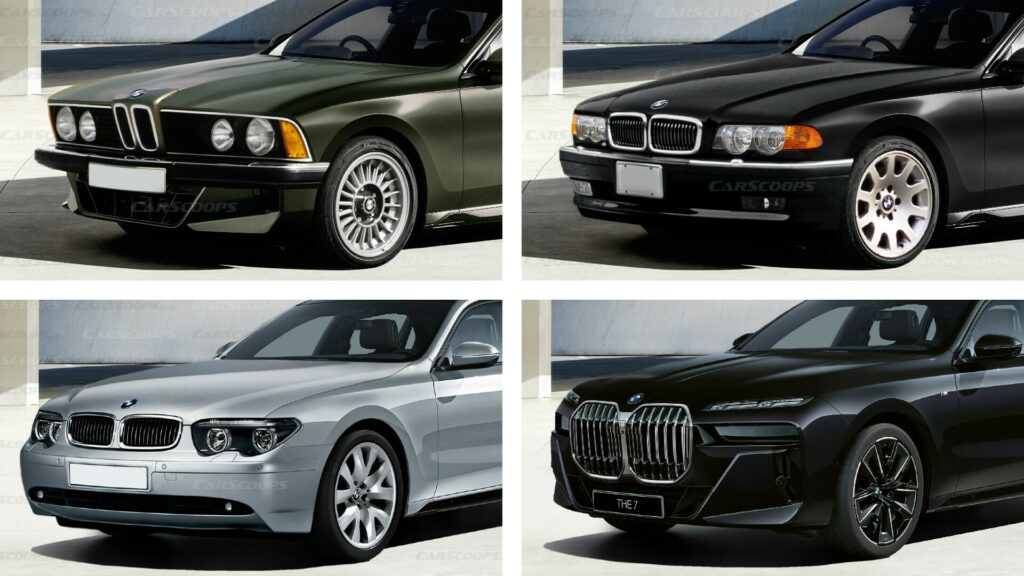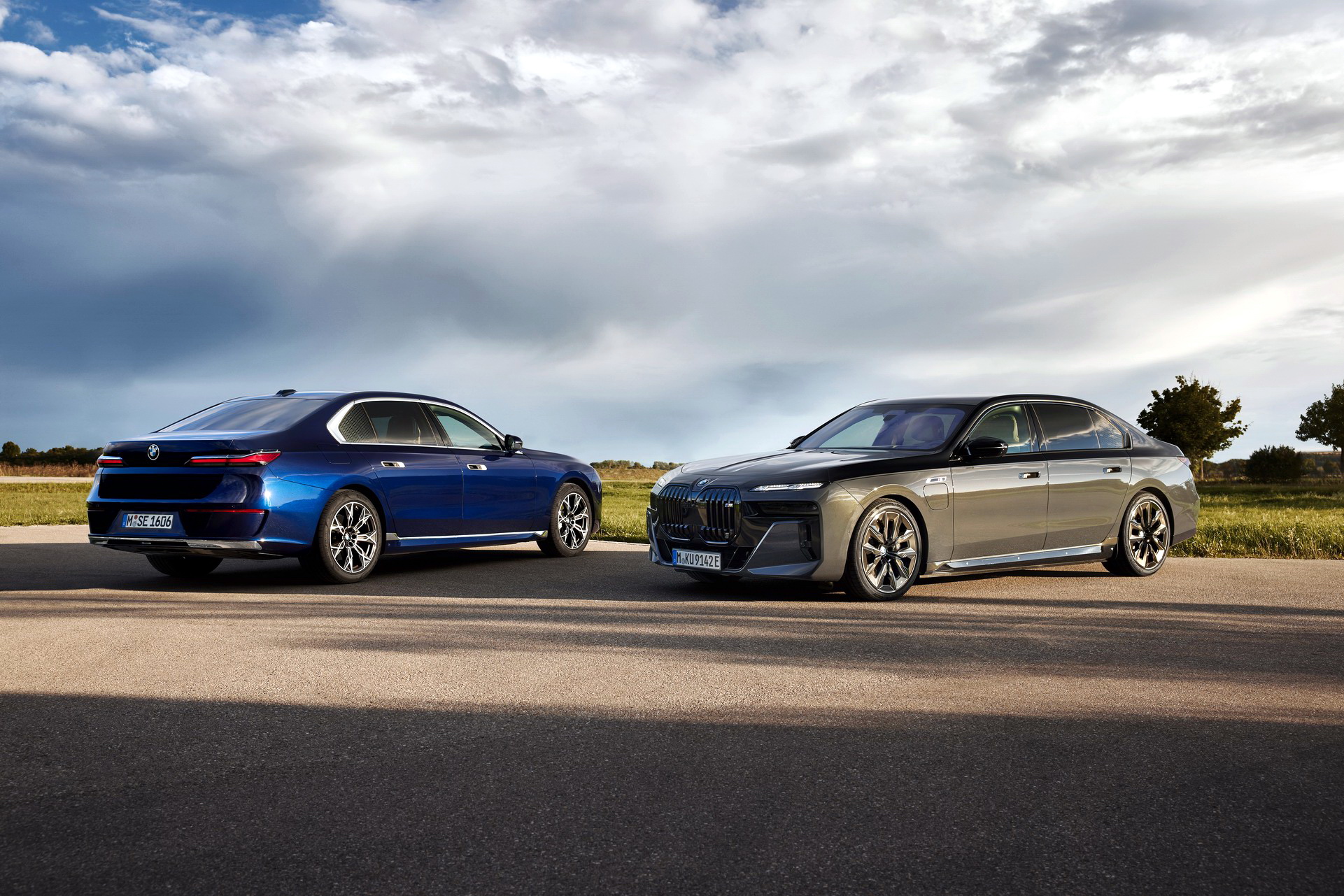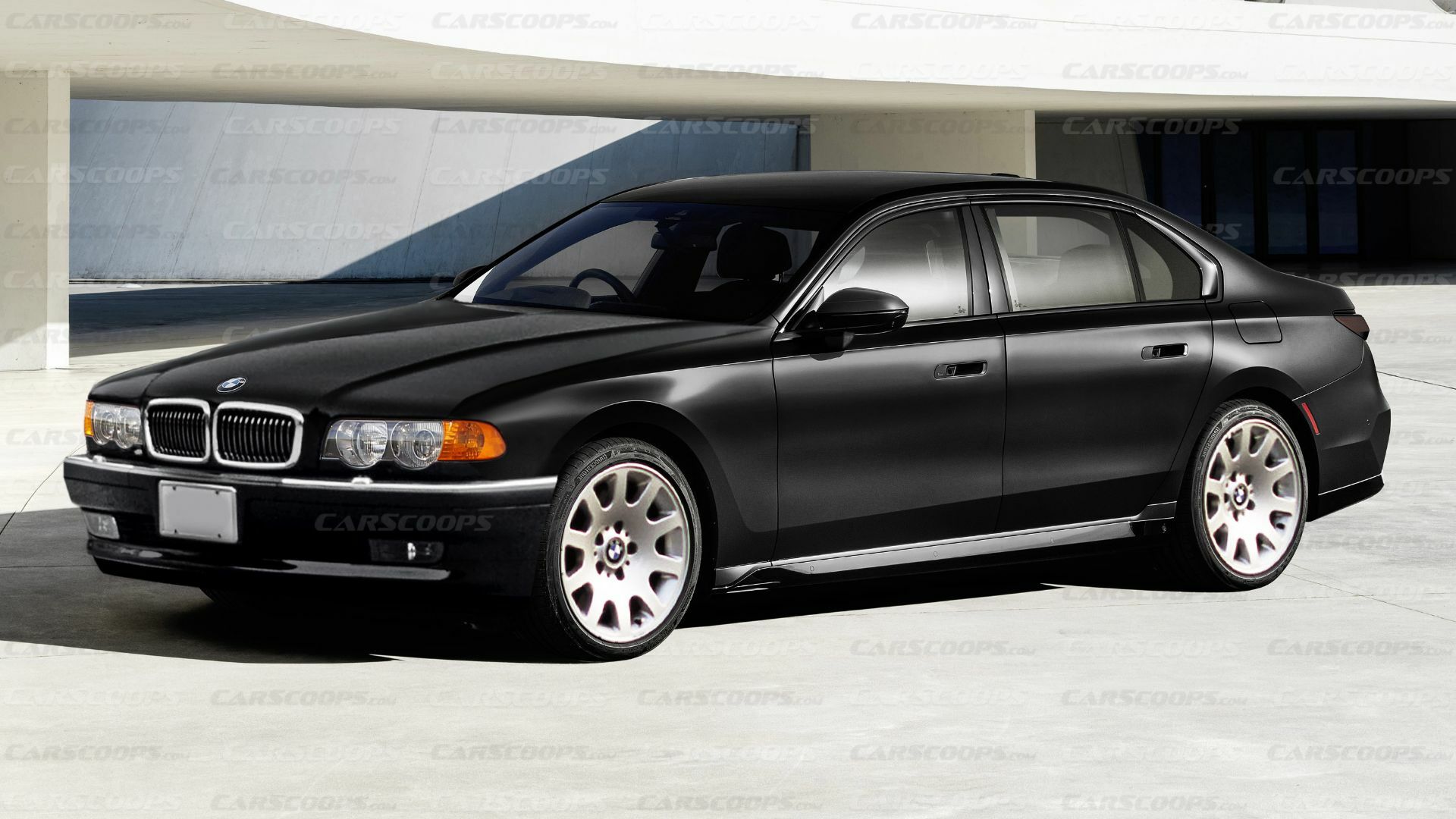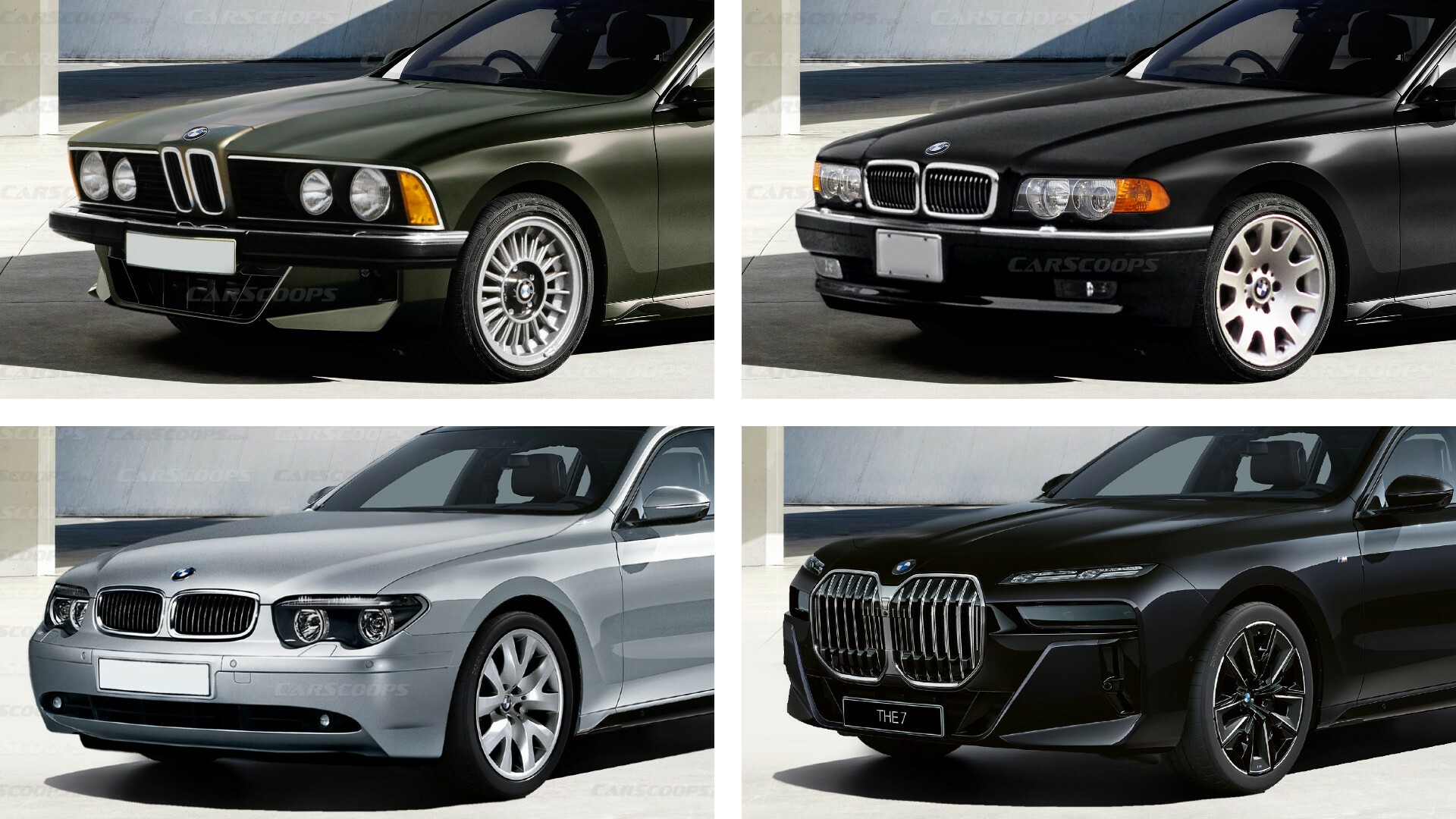This story contains renderings created by Thanos Pappas for CarScoops that are neither related to nor endorsed by BMW.
The BMW 7-Series is one of the most widely recognized luxury sedans as a direct competitor to the rival Mercedes S-Class. From a grand total of seven generations, some 7ers are considered stunning, and others polarizing. According to most people, the brand-new 2023 BMW 7-Series is not one of the lookers, which is why we decided to face-swap it with some of its predecessors.
Our goal was to discover if an older front end looks better combined with the latest body. Among the seven generations, we chose the original and now-classic E23 (1977-1986), the gorgeous E38 (1994-2001), and the controversial E65 (2001-2008) to balance things up a little bit.
E23 (1977-1986)
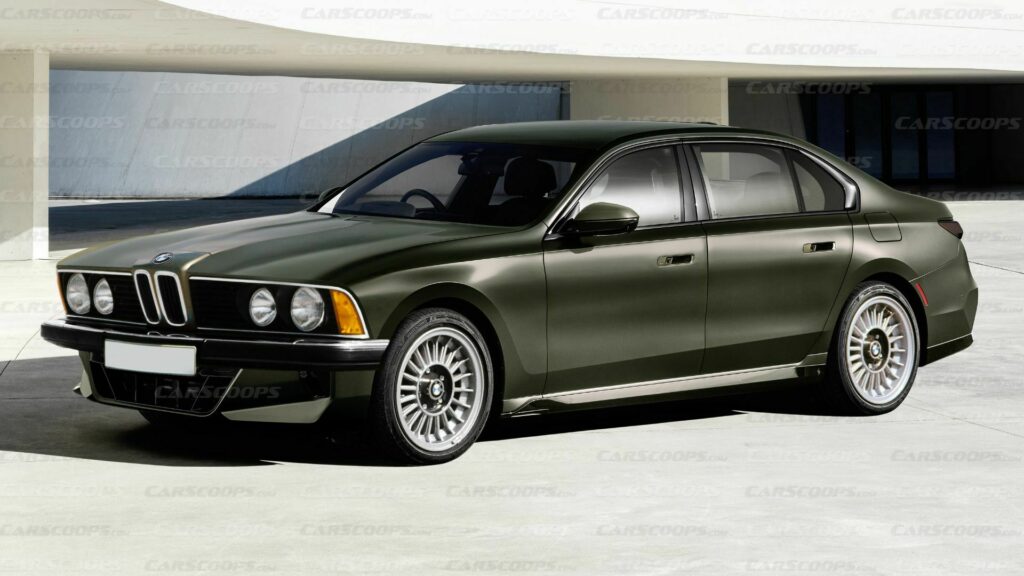
Let’s start with the first generation of the 7-Series that debuted in 1977 replacing the older E3 sedans at the top of the BMW range. The size difference between the classic sedan and the new 7-Series is as massive as the 45-year gap that separates them. In fact, the first gen is 531 mm (20.9 inches) shorter, 150 mm (5.9 inches) narrower, and 114 mm (4.5 inches) lower than the current seventh gen. This makes it harder to swap parts between the two, although we tried our best.
The shark nose of the E23 penned by Paul Bracq and Manfred Rennen is compatible with the long bonnet of the G70, but the thin bumper needed quite an extension, which is why we kept the lower portion of the modern car. The quad round headlights, the ultra-thin kidney grille, the chrome accents, and the retro alloy wheels complete the conversion. The latter have been adjusted in diameter to match the tire size of the new 7-Series, since the old model’s wheels were tiny in comparison.
E38 (1994-2001)
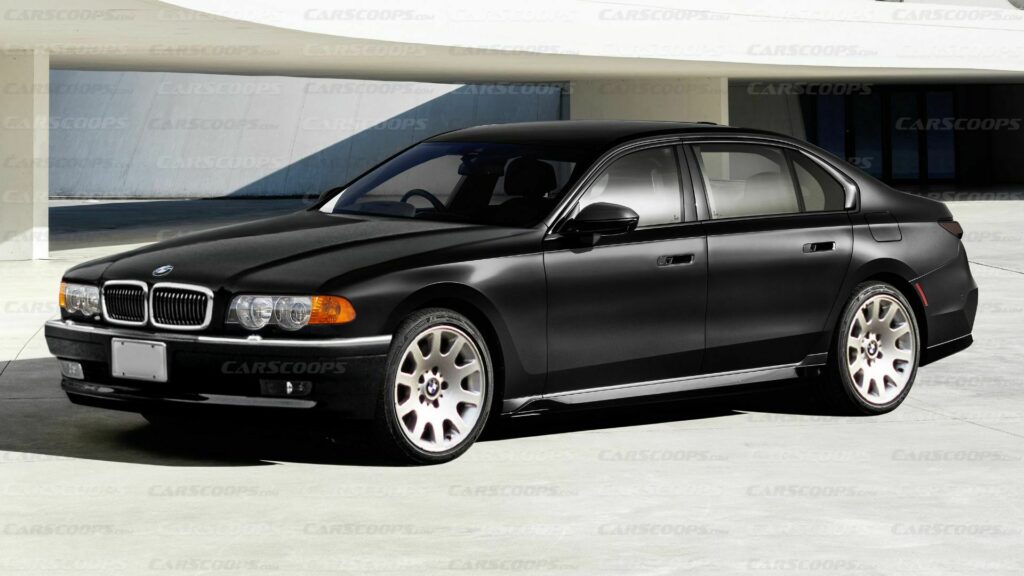
For the next face swap, we skipped the admittedly great-looking E32 (1986-1994) and went straight up to the E38 (1994-2001) which is considered by some as the peak of the 7 Series in terms of exterior styling. The model, penned by Boyke Boyer, is known for its slim silhouette and sharp styling cues that dictated the looks of the entire BMW range in the following period. For our render we choose the front end of the facelifted version that appeared in 1998 with slightly revised headlights.
The result is surprisingly neat, again with a little adjustment in terms of the size of the front clip. Thankfully BMW designers kept the Hoffmeister’s kink and the horizontal character line on the profile of the new 7-Series which makes it more compatible with the timeless design of the third-gen model. The ’90s wheels also help with the transition, while a similarly revised tail would probably result in a legitimate reverse restomod.
E65 (2001-2008)
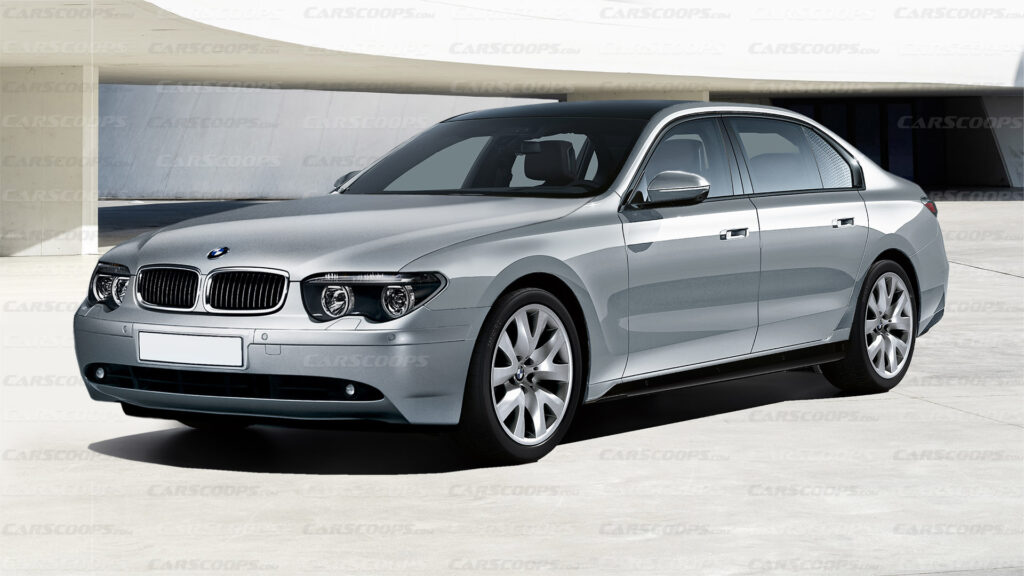
The E65 is easily the most talked-about generation of the 7-Series so we couldn’t ignore it. Designed by Adrian van Hooydonk under the direction of Chris Bangle, it represented a significant departure from its predecessor in terms of styling, size, and proportions. Despite the hate it received from hardcore BMW fans, the E65 proved to be a sales hit. Today, some people find it has matured pretty nicely, since it doesn’t look out of place among modern vehicles.
For our conversion, we opted for the front end of the original instead of the softer and more mainstream 2005 facelift. The then-unconventional headlights with the indicators above the main beams look simple compared to today’s LED units, the kidney grille looks tiny in comparison, and the bumper is minimalist to say the least. Overall, it feels like we fixed the design of the E65 instead of the G70, by eliminating the Bangle butt.
Read: Dealer Brings Together Seven Generations Of The BMW 7-Series
The faces of the 7 Series that followed – the F01 (2008-2015) and the G11 (2015-2022) – wouldn’t look that much different combined with the profile of the current G70 which is why we skipped them.
G70 (2022-present)
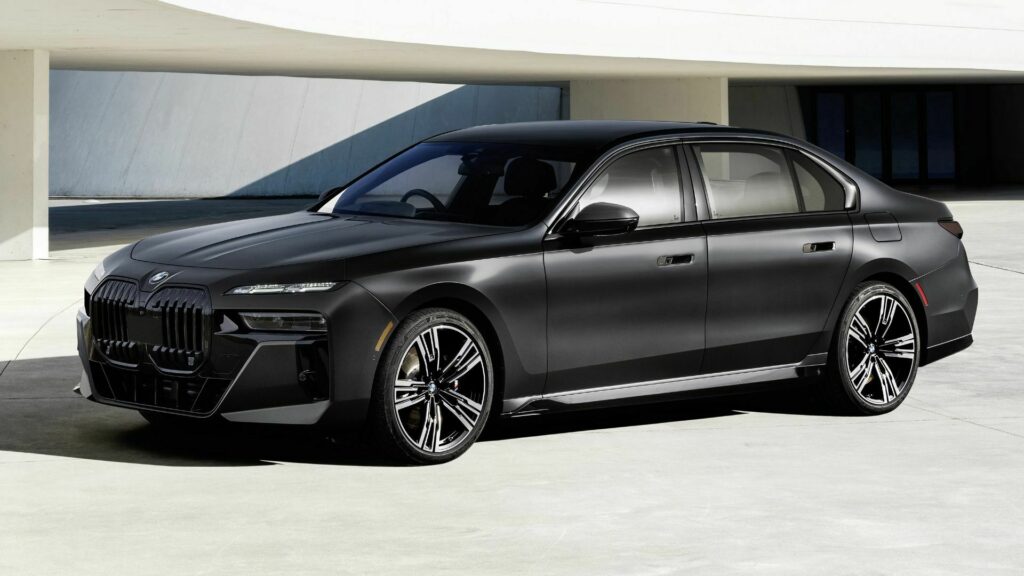
So we wrap things up with the photo of the current G70 generation which was the starting point for today’s face-swapping session. As you can see, the grille is larger than ever, accompanied by the new split headlights and the rather complex bumper intakes. The fully electric i7 is differentiated from the ICE-powered sibling with redesigned bumpers, but overall it still looks like a 7-Series.
BMW design boss Domagoj Dukec made it clear that polarizing styling is one of the major selling points for its models. Thus, unlike other automakers who rely on evolution rather than revolution, BMW won’t be using tried-and-tested styling cues for its future range. Our renderings might be far from this strategy but if you had the power to choose as the CEO of the Bavarian automaker, which one would you send as a brief to the designers for the next update of the 7-Series?




